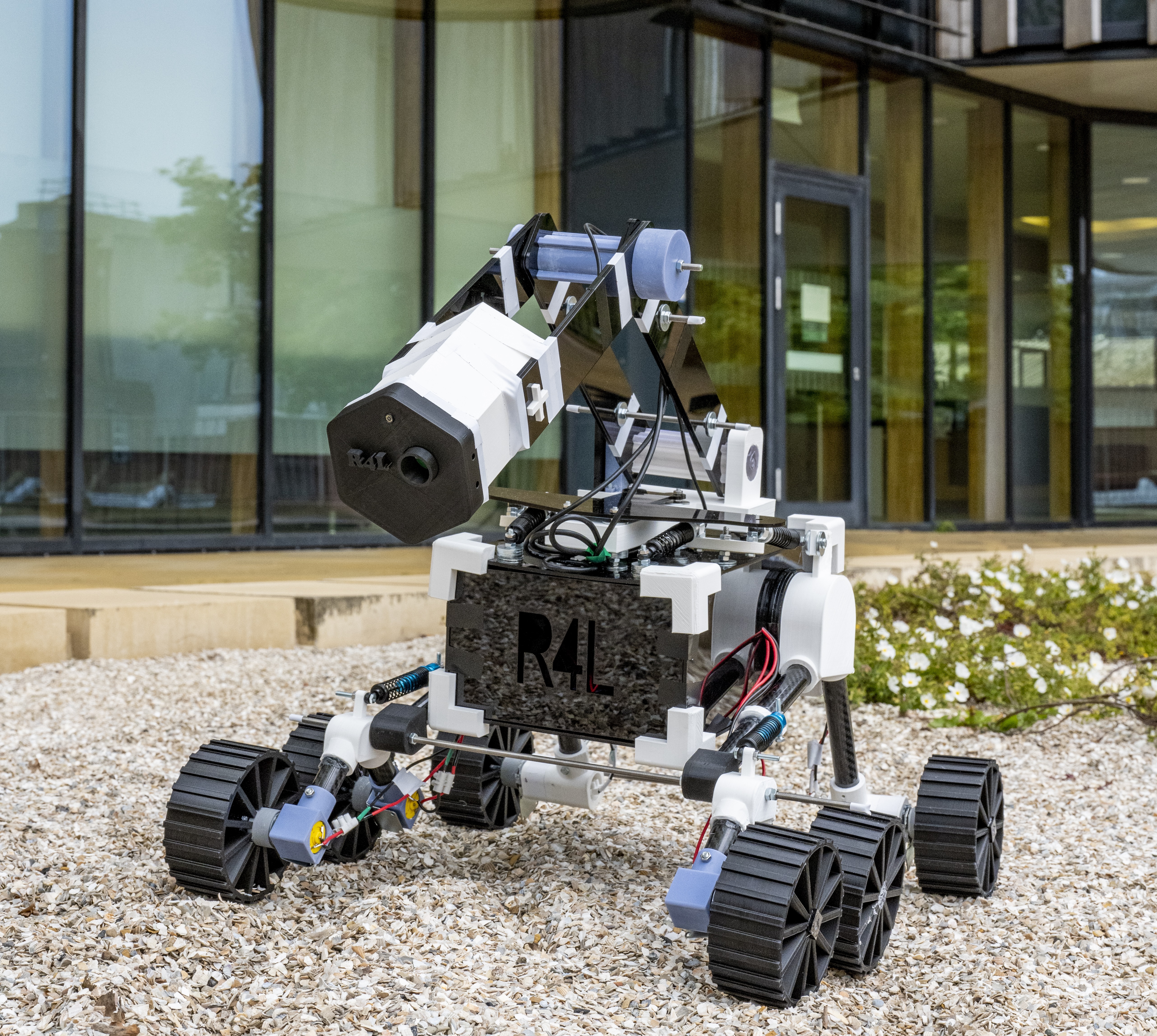From Mars to Humans – laser-based spectroscopic technology is detecting life on Mars and improving human health

From Mars to Humans – laser-based spectroscopic technology that is being used by the 2021 Mars Rover mission to detect possible traces of life on the planet, is being used innovatively by Southampton scientists to develop a public engagement activity that demonstrates transformative tools for the diagnosis and treatment of disease.
Associate Director of the Institute for Life Sciences (IfLS) and Head of Chemical Biology, in Chemistry at Southampton, Professor Sumeet Mahajan led the interdisciplinary work to create a replica interactive Mars Rover that was showcased at the recent Southampton Science and Engineering Festival (SOTSEF).
More than 500 visitors took part in the Mars to Humans: Lighting up Life activity that was based on Raman spectroscopy - the underpinning science being used on the Mars mission. The demonstrator came about through Sumeet’s pioneering research in that specific area of imaging and his personal interest in astrobiology.
He said: “When I learnt that the latest Mars Rover mission used the same technology for detecting signs of life that we use and develop in our labs for early detection of diseases, I realised we could create an outreach tool that conveys to the public the message that the same underpinning science can lead to transformative technological applications at different frontiers of human endeavour. We are applying Raman spectroscopy for improving health not only in humans but also in animals where we are detecting infections in livestock.”
The result was a 3D prototype of the Mars Rover that engaged SOTSEF visitors in the core principles of light and how it interacts with materials, so that they could understand how light can be used to improve human health.
The hands-on activity is based on the work Sumeet and his team at Southampton are doing as part of the Engineering and Physical Sciences Research Council (EPSRC) InlightenUs project that draws together expertise from the Universities of Southampton, Edinburgh and Nottingham to create novel diagnostic medical equipment that can be used by GPs to detect bone disease and skin cancer without any invasive procedure.
InLightenUs is exploring how tools using Raman spectroscopy and similar label-free light-based techniques can be developed to enable better, earlier and more accurate diagnoses of skin cancer and bone disease, without using X-ray radiation or chemical labels. It aims to do this from outside the body using harmless light and the technology has far-reaching applications in other disease areas including antimicrobial resistance, biofilm detection and Alzheimer’s disease.
The Mars to Humans rover was built by Southampton PhD students Jacob Kleboe and Hiroki Cook, and expanded on the previous public engagement activity – called Dr Raman – that shows how scientists and doctors can use the important information from minute changes in the colour of light to tell what molecules are present in a particular substance.
Jacob said: “The Mars to Humans rover moved around the floor ‘light firing’ at a substance to reveal its wavelength and its molecular properties. It demonstrated to the public that a robot on Mars could use light in this way to detect molecules and show exactly what that substance is.”
InLightenUs members from Edinburgh joined the Southampton team at the SOTSEF festival to explain more about their ground-breaking project.
Sumeet added: “The IfLS has been a pillar of strength and provided logistical support in helping coordinate the public engagement project. They have funded previous hands-on demonstrators either directly or from grants from Southampton’s Public Engagement with Research Unit (PERU), and together with InLightenUs have funded the overall activity this year.”
InLightenUs Public Engagement with Research Manager Dr Helen Szoor McElhinney, from the University of Edinburgh, said: “The interest and enthusiasm of the visitors to the Mars to Humans exhibit was just fantastic. When exhibits like this one, are designed in a creative and thought-provoking way, they allow visitors to connect directly with exciting, ground-breaking science and its relevance to their everyday life.”